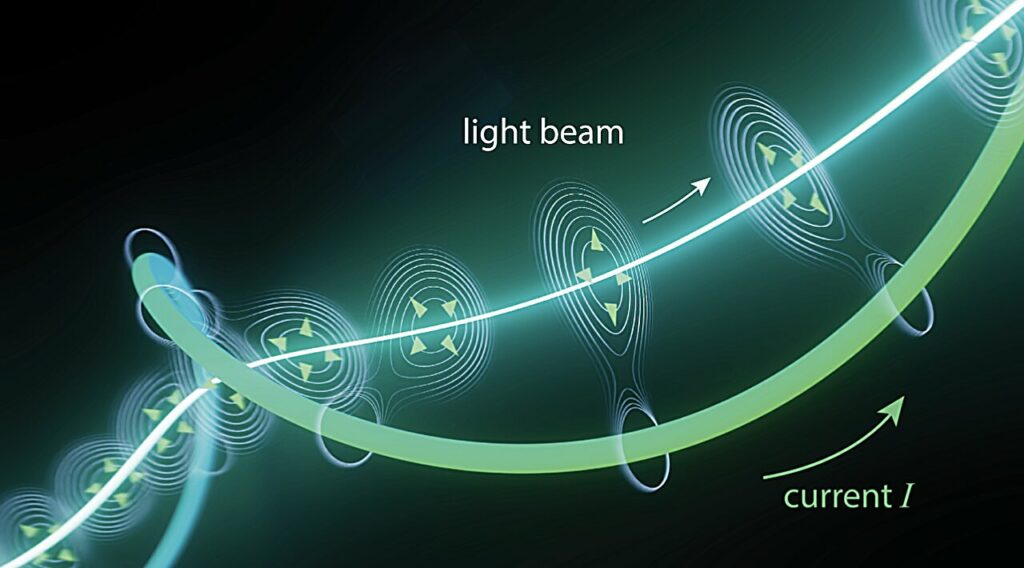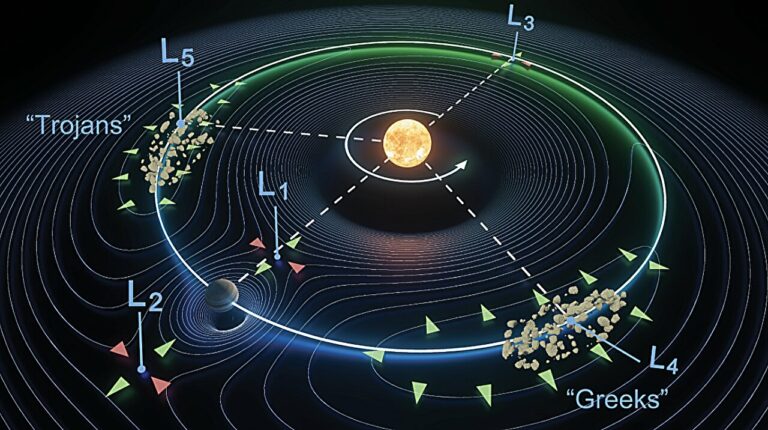Utilizing a Trojan Strategy to Direct and Capture Light Beams Through Lagrange Points
Various contemporary technologies, such as communication and information processing systems, heavily rely on the reliable guidance and capture of optical waves. Traditionally, the most common method to achieve this is through the total internal reflection of optical fibers and similar structures. However, physicists have recently been exploring alternative techniques based on different physical mechanisms.
A team of researchers from the University of Southern California has recently developed a highly innovative approach to trap light. Published in Nature Physics, their method takes advantage of the unique properties of Lagrange points. These equilibrium points, which govern the orbits of celestial bodies like Trojan asteroids in the sun-Jupiter system, have been instrumental in this research.
According to co-authors Mercedeh Khajavikhan and Demetrios N. Christodoulides, the discovery of Lagrange points can be attributed to the early work of Leonhard Euler and Joseph-Louis Lagrange. They found that at these specific locations, the gravitational attraction exerted by two large bodies can be precisely counterbalanced by centrifugal forces, making them crucial in this study.
While the James Webb telescope and the Aditya L1 satellite have already utilized certain strategic positions in space for satellite stability with minimal propellant consumption, our study specifically focuses on the fascinating properties of Lagrange points. These points, named after the mathematician Lagrange, are positions in space where the gravitational forces of two celestial bodies create areas of enhanced attraction and repulsion.
In our research, Khajavikhan and Christodoulides aimed to explore the potential of harnessing the unique physics of Lagrange points to manipulate and trap light waves. They demonstrated in their paper that the utilization of Lagrange points for optical applications bears similarities to capturing Trojan asteroids within the orbit of the sun and Jupiter.
“The Lagrange optical waveguide is created by passing an electric current through a helical wire within a cured silicon oil cylinder,” explained Khajavikhan and Christodoulides.
In their research, Khajavikhan and Christodoulides devised a compact setup within their laboratory to replicate the characteristics of Lagrange points, similar to those found in the orbits of Trojan asteroids. Their experimental system consisted of an iron wire with a helical shape placed in a medium with a refractive index that varied with temperature. Through the thermo-optic effect, this arrangement resulted in the creation of a twisted index landscape.
Surprisingly, within this mountain-slope index profile, the repulsion of photons was counterbalanced by the centrifugal force, leading to the formation of a stable Lagrange point. Consequently, an optical beam, known as a Trojan beam, was confined in a two-dimensional manner at this specific position.

The medium used in the experiment was subjected to non-homogeneous heating through the passage of electricity. As a result, a Trojan optical beam was formed, according to the researchers.
This simple experiment yielded intriguing findings. Notably, the researchers discovered that optical Trojan beams could be directed or captured within a defocusing refractive index environment, which is typically not possible.
The researchers, Khajavikhan and Christodoulides, emphasized the unremarkable nature of the refractive index landscape where these optical beams are captured. It lacks any distinguishing features that could indicate a guiding response. Essentially, the optical beam becomes trapped in inconspicuous regions where conventional waveguide structures do not exist.
The recent research conducted by this team highlights the unique properties of Lagrange points, which can be utilized to guide and confine light waves. In the future, this could lead to the development of novel techniques for guiding optical waves in unconventional environments where traditional methods are ineffective, such as in liquids and gases.
Khajavikhan and Christodoulides suggested that an interesting avenue for further investigation could involve the utilization of Trojan beams in amplifying laser systems. In such systems, the manipulation of optical gain or loss could provide alternative means for attracting or repelling light beams in fully dielectric media.
The researchers have primarily focused on the application of Lagrange points for guiding light beams thus far. However, they believe that their methodology could also be applied in other areas of physics beyond optics. For example, it could be used to guide acoustic waves or ultracold atoms. Khajavikhan and Christodoulides expressed their intention to explore the possibility of guiding light in acoustic waves in both liquid and gaseous media. Additionally, they find it intriguing to observe the trapping and transportation of dielectric micro- and nano-particles in Lagrange waveguides using optical tractor beams. This would involve inducing multiple Lagrange points, which is not feasible in celestial mechanics.
This article is republished from PhysORG under a Creative Commons license. Read the original article.
Do not forget to share your opinion with us to provide you with the best posts !




0 Comments